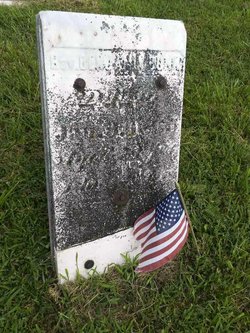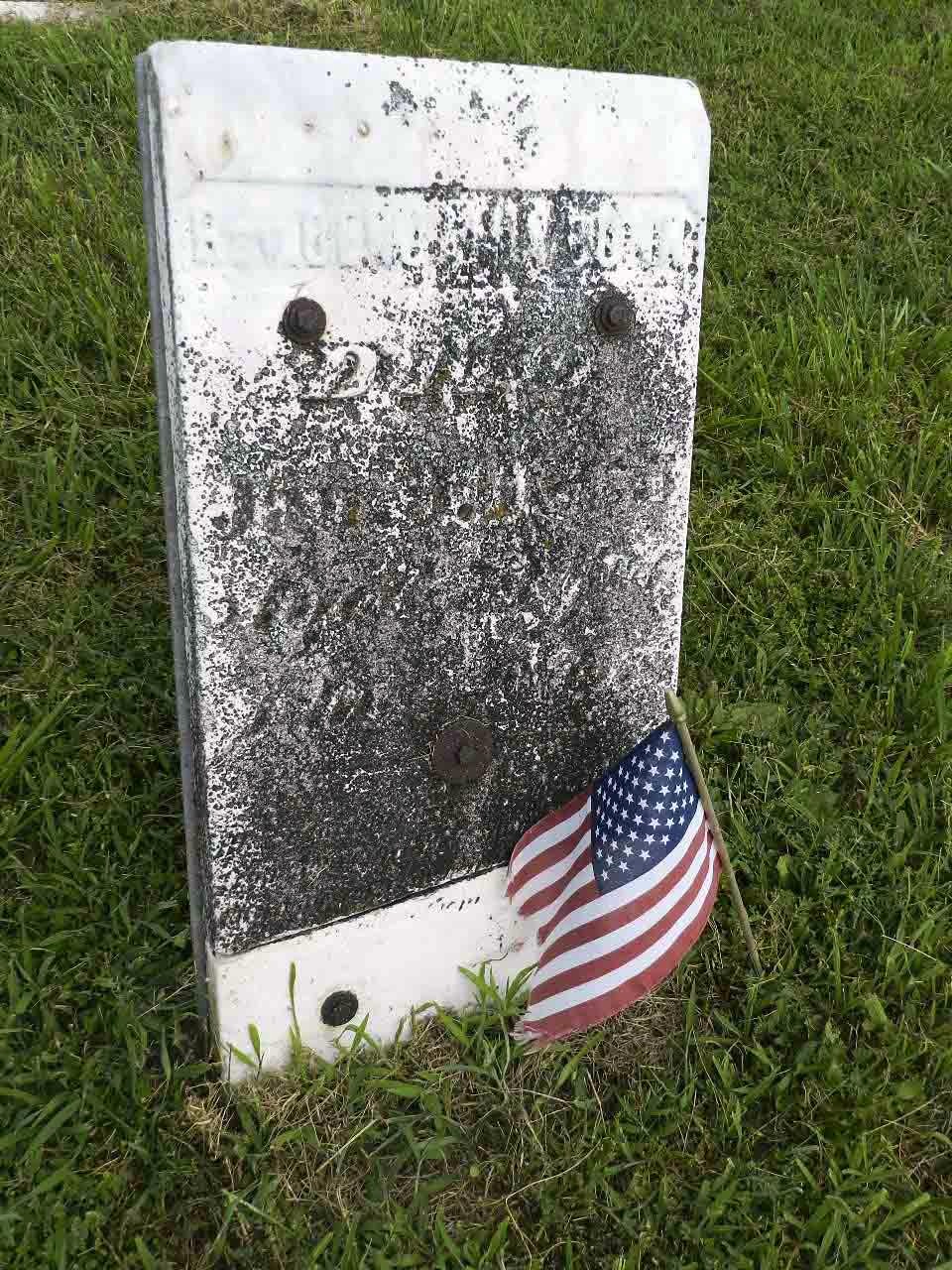He was a Methodist minister of the Gospel, blacksmith, millwright, and pioneer farmer. He ran the first flour mill in Bonpas, Richland Co., IL
His father died when he was a young boy. He appears to have taken every opportunity to gain an education. There is ample proof on documents such as marriage licenses, deeds, etc. that he could read and write, and there is no doubt but what he could read for he later became a local Methodist preacher. Prior to his marriage he moved to or near Wellsburg, VA (now WV). It was there he was married to Margaret Hyatt.
Prior to his marriage in his 21st year, he removed to or near Wellsburg, WV, then VA. Apparently, he was married here or in this general area to Margaret Hyatt, daughter of Hezekiah Hyatt, August 16, 1804.
According to the story of tradition handed down by Solomon, Benjamin and Margaret, soon after their marriage, drove west by way of covered wagon pulled by a team of horses into east-north-central Ohio, only a few miles from Wooster. He was a blacksmith, and moved presumably because of prospects of greater call for his services.
They apparently moved to the Ohio wilderness in 1809. Alexander Finley, who is credited with being the first settler of Ashland Co., OH, gave April17, 1809 as date of his own arrival, and stated that Benjamin Bunn and two others arrived with their families a few weeks later. The census enumerator found Benjamin Bunn at Jeromesville, Ashland Co., OH in 1810. In 1812, he joined several neighbors in erecting a block house. It appears that they took with them Vachel Metcalf, who helped them built a log fort or block house in their neighborhood to protect their families and themselves against the Indians during the troublesome war years of 1812-1813. During this period, it was extremely helpful that he could speak a number of Indian dialects. There was an interesting story of his contact with the Indian tribe in Lighting Ancestral Lamps that describes how he and his family came to be neighbors of Indians at the Indians' request. It would appear, based on this, that Hyatt, Isabel and Seely were born in or near this Indian town. These Indians were probably Delawares.
The Bunn farm was 2 1/2 miles southeast of Jeromesville, and the Hyatt family lived between those points.
From 1809 to 1812 the Indians gave the white families no trouble. However, with the coming of the War of 1812 the British were largely successful in inciting the Indians to make trouble for the pioneers. That is when they built the log fort or block house. Benjamin was appointed captain for this particular fort. According to Tom Bunn, he was in the Second Regiment, detached from the 2nd, 12th and 3rd Brigade. The British defeat apparently ended the bad relationships with the Indians, and they moved out and away from the area. Then with the signing of peace after the close of the war came more settlers, and this Country of the Wilderness gradually turned from hunting country into a fertile farming area.
Mr. Bunn served as a soldier in the War of 1812 and held a captain's commission. He was in the Second Regiment (Detached from the 2nd, 12th, and 3rd Brigade).
Benjamin and Margaret very probably prospered during the period of 1813-1838. At this point, they again moved their family. They gathered their family of 10, most of whom were already married and established in the community, and started their trek 400 miles westward. All of the family but Samuel Haynes and Isabel Bunn Haynes went. Nine covered wagons, bearing as many families emigrated from near Jeromesville, OH in the autumn of 1838, to Lawrence County, IL.
Most of the families spent the first winter with earlier settlers. They soon, however, established themselves. Benjamin and wife and 8 of the children entered from the government 1, 280 acres of land in Bonpas and Claremont townships, Richland County, IL, between the dates of October. 6, 1838 and December 26, 1838. In addition, Benjamin Jr. entered 160 acres and Hyatt and wife, entered 160 acres in the fall of 1838 in Luken township, Lawrence County. Eventually, the Bunn family owned approximately 2500 acres.
There were numerous hard maples (sugar trees). Sugar making largely occupied the time of these early Bunns in both OH and IL during the early spring months of sap flow. This product not only served them, but provided them with some revenue. They also dug up the limestone outcroppings, burned some of it, and sold the rest.
Benjamin built a small flour mill. It was the first steam flour mill in Bonpas, Richland Co. His son Aaron helped him operate it.
After the death of his wife, Margaret, Benjamin made his home with his daughter Rebecca until his death in 1855.
He was a Methodist minister of the Gospel, blacksmith, millwright, and pioneer farmer. He ran the first flour mill in Bonpas, Richland Co., IL
His father died when he was a young boy. He appears to have taken every opportunity to gain an education. There is ample proof on documents such as marriage licenses, deeds, etc. that he could read and write, and there is no doubt but what he could read for he later became a local Methodist preacher. Prior to his marriage he moved to or near Wellsburg, VA (now WV). It was there he was married to Margaret Hyatt.
Prior to his marriage in his 21st year, he removed to or near Wellsburg, WV, then VA. Apparently, he was married here or in this general area to Margaret Hyatt, daughter of Hezekiah Hyatt, August 16, 1804.
According to the story of tradition handed down by Solomon, Benjamin and Margaret, soon after their marriage, drove west by way of covered wagon pulled by a team of horses into east-north-central Ohio, only a few miles from Wooster. He was a blacksmith, and moved presumably because of prospects of greater call for his services.
They apparently moved to the Ohio wilderness in 1809. Alexander Finley, who is credited with being the first settler of Ashland Co., OH, gave April17, 1809 as date of his own arrival, and stated that Benjamin Bunn and two others arrived with their families a few weeks later. The census enumerator found Benjamin Bunn at Jeromesville, Ashland Co., OH in 1810. In 1812, he joined several neighbors in erecting a block house. It appears that they took with them Vachel Metcalf, who helped them built a log fort or block house in their neighborhood to protect their families and themselves against the Indians during the troublesome war years of 1812-1813. During this period, it was extremely helpful that he could speak a number of Indian dialects. There was an interesting story of his contact with the Indian tribe in Lighting Ancestral Lamps that describes how he and his family came to be neighbors of Indians at the Indians' request. It would appear, based on this, that Hyatt, Isabel and Seely were born in or near this Indian town. These Indians were probably Delawares.
The Bunn farm was 2 1/2 miles southeast of Jeromesville, and the Hyatt family lived between those points.
From 1809 to 1812 the Indians gave the white families no trouble. However, with the coming of the War of 1812 the British were largely successful in inciting the Indians to make trouble for the pioneers. That is when they built the log fort or block house. Benjamin was appointed captain for this particular fort. According to Tom Bunn, he was in the Second Regiment, detached from the 2nd, 12th and 3rd Brigade. The British defeat apparently ended the bad relationships with the Indians, and they moved out and away from the area. Then with the signing of peace after the close of the war came more settlers, and this Country of the Wilderness gradually turned from hunting country into a fertile farming area.
Mr. Bunn served as a soldier in the War of 1812 and held a captain's commission. He was in the Second Regiment (Detached from the 2nd, 12th, and 3rd Brigade).
Benjamin and Margaret very probably prospered during the period of 1813-1838. At this point, they again moved their family. They gathered their family of 10, most of whom were already married and established in the community, and started their trek 400 miles westward. All of the family but Samuel Haynes and Isabel Bunn Haynes went. Nine covered wagons, bearing as many families emigrated from near Jeromesville, OH in the autumn of 1838, to Lawrence County, IL.
Most of the families spent the first winter with earlier settlers. They soon, however, established themselves. Benjamin and wife and 8 of the children entered from the government 1, 280 acres of land in Bonpas and Claremont townships, Richland County, IL, between the dates of October. 6, 1838 and December 26, 1838. In addition, Benjamin Jr. entered 160 acres and Hyatt and wife, entered 160 acres in the fall of 1838 in Luken township, Lawrence County. Eventually, the Bunn family owned approximately 2500 acres.
There were numerous hard maples (sugar trees). Sugar making largely occupied the time of these early Bunns in both OH and IL during the early spring months of sap flow. This product not only served them, but provided them with some revenue. They also dug up the limestone outcroppings, burned some of it, and sold the rest.
Benjamin built a small flour mill. It was the first steam flour mill in Bonpas, Richland Co. His son Aaron helped him operate it.
After the death of his wife, Margaret, Benjamin made his home with his daughter Rebecca until his death in 1855.
Family Members
Advertisement
Explore more
Sponsored by Ancestry
Advertisement







